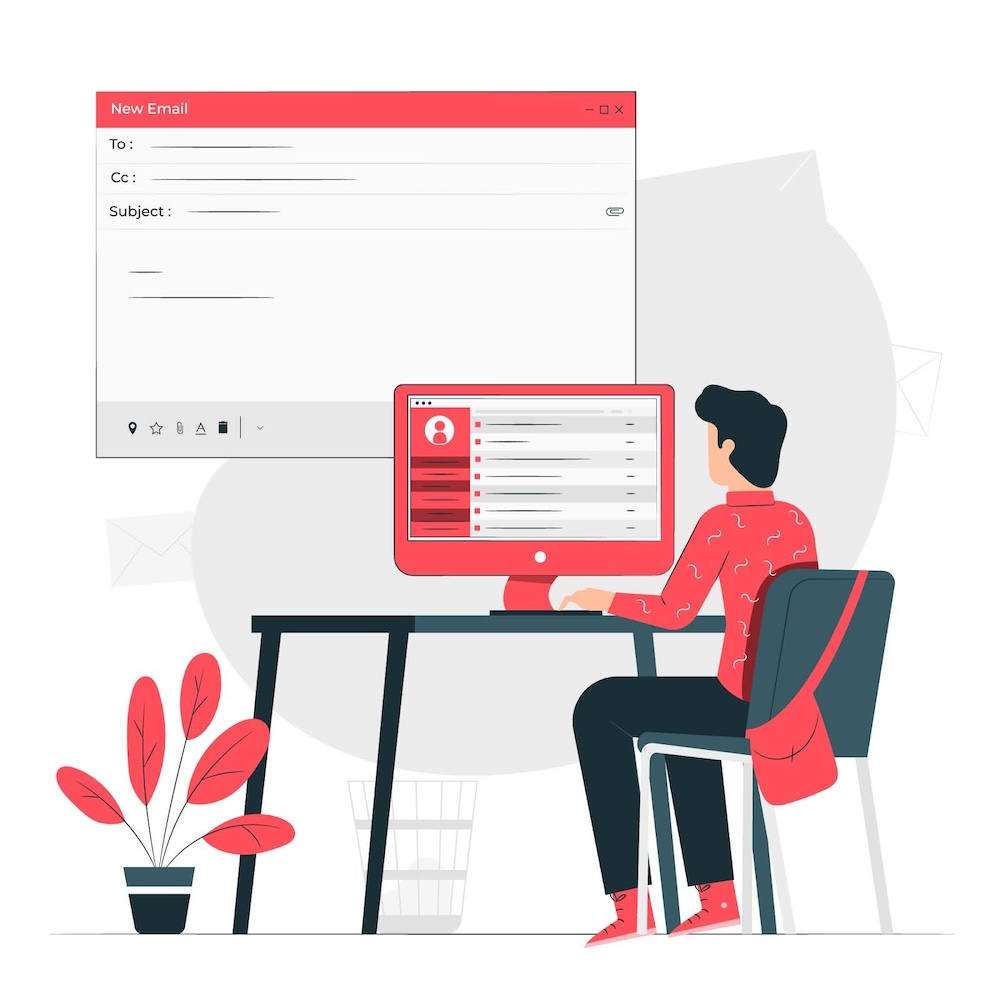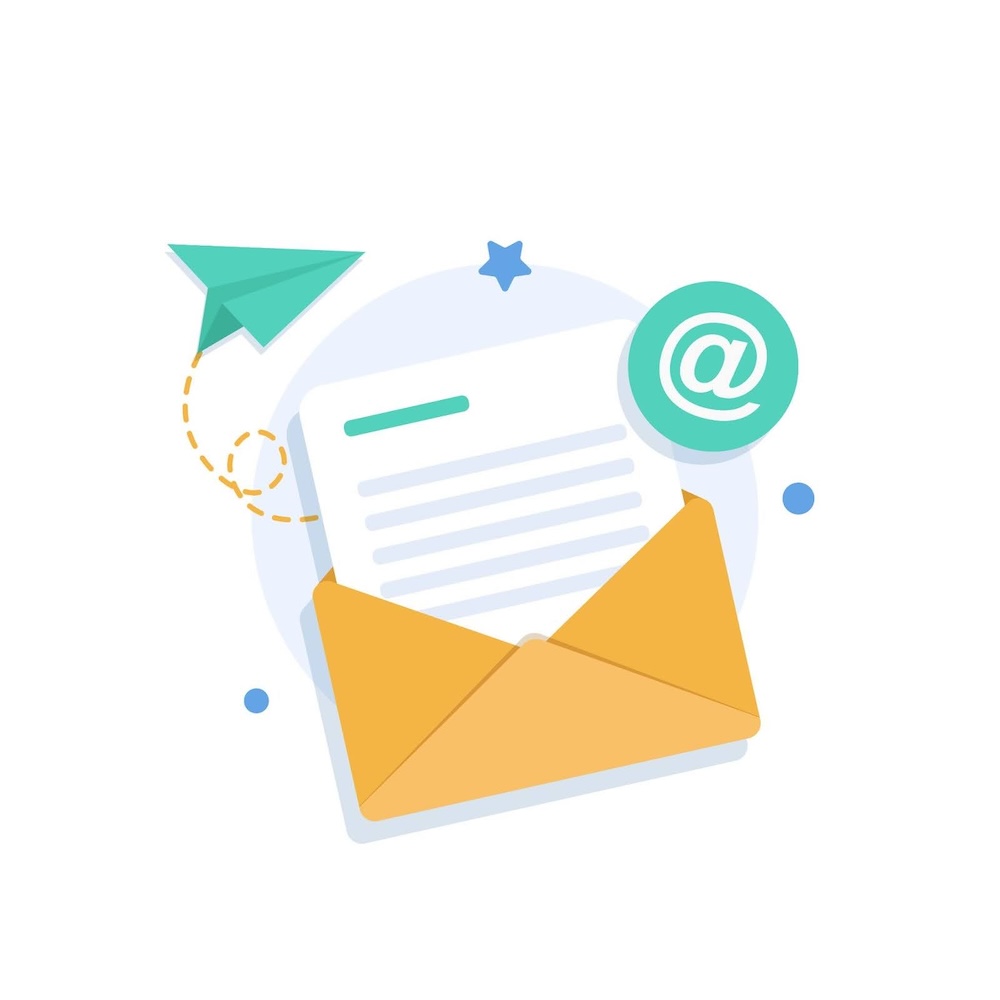
In the modern business environment, it can be easy to get overwhelmed by the sheer number of tools and channels available for getting in touch with your customers. Even if you only consider social media and online advertising, that’s already an entire world of potential to be explored.
But far too often, businesses can find themselves losing sight of the forest because of all the trees. What are we talking about? In a nutshell, the surprising effectiveness of good old-fashioned emails.
Why Use Sales Emails?
Sales emails stand out from the crowd for a few reasons: they’re simple, they’re familiar, and they’re easy to automate at scale. When it comes to talking directly to your target audience, it’s hard to beat being able to appear directly in their mobile or desktop inbox at the click of a button.
The usefulness of a sales email goes way beyond mere communication, however. As a medium, it gives you the potential to craft a message that resonates, engages, and ultimately compels its intended recipient to take action.
In the following guide, we’ll be going over some of the basic aspects of creating the kind of effective sales email you can use to drive better business outcomes by speaking directly to your ideal customers. Make sure you read to the end, where we’ve taken the liberty of including a few different templates covering different potential scenarios you can start using right away. Let’s get straight into it!
Broad Strokes
Although the digital age has transformed how businesses connect with potential customers, the email continues to remain a cornerstone of any comprehensive digital marketing strategy. Combining the personal touch of traditional sales techniques with the reach and efficiency of modern technology, it offers a unique blend of old and new that can be a powerful driver of growth and conversions.
It’s not quite as simple as typing, editing, and hitting send, though. In order to craft an email that cuts through the clutter and grabs the attention of its recipient in their overflowing inbox, you need a deep understanding of your audience as well as a solid grasp of persuasive online communication techniques.
Understanding Your Audience
To write the perfect sales email, you need to work backwards, starting off with the very end of the chain: the target of your email. Without deeply understanding their goals, their situation, and the problems they’re facing, it’s going to be incredibly difficult, if not impossible, to create a meaningful connection with them over email.
So before you even begin getting into the details of your sales email drafts, take a moment to step into the shoes of the people who are going to be reading them. Here are a few important questions to ask yourself as you try to understand your audience:
Who Are They?
Be specific. The more detailed you can get in your description of your target audience, the better your chances of crafting a message that resonates with them.
What Challenges Are They Facing?
It’s best to outline these in order of priority, since not all problems were created equal. Often, potential customers will be dealing with a range of different challenges, but some are more urgent or mission-critical than others.
What Solutions Are They Seeking?
Be careful with this one. Although it might be tempting to just assume the solution you’re offering is exactly what they’re looking for, take the time to think through the problem from their perspective. This will help you figure out which elements of your product or service to highlight in the eventual sales email once you get around to drafting it.
What Objections Might They Have?
Although not strictly necessary, it’s always a good idea to try and brainstorm the most predictable concerns your target audience might have. This strategy helps you to preempt some of the most problematic objections, essentially predisposing the recipient of the sales email towards your solution before they’ve had the chance to even consider the issues themselves.

Components of a Successful Sales Email
Now that you have a rough idea of how to go about understanding your audience, it’s time to talk about the actual components of a successful sales email. So much more than a block of text, it’s better to think of it as a carefully structured path, designed to guide the reader through a progressive journey from initial curiosity to eventually taking some kind of action.
This path, which is common to all sales emails, has a few different signposts along the way, each of which needs to be considered in detail if the overall narrative is to be successful.
Subject Line
This is your first, and often only, opportunity to capture the recipient’s attention. Remember that your email is only going to be one in a sea of others, so you need to make the most of the single chance you get. Keep your subject line concise, relevant, and, most importantly of all, intriguing.
The best sales email subject lines don’t try to tell an entire story in a few words—they just tease the opening and imply there’s enough value inside to tempt the reader to click on the email and read the rest.
Opening Line
Your opening line’s going to set the tone for the rest of the email. It’s best to start with a personal touch, addressing the recipient by name in a friendly tone. This will help to establish a connection from the very first paragraph.
Any additional personal details you have to hand should go in here as well. Whether you’re referencing a recent event, a mutual connection, or a shared interest, everything in your opening line should serve the goal of building rapport and credibility as quickly as possible.
Just because they’ve opened the email doesn’t mean they’re going to read it all the way through, after all. If you can make a connection with your first few words, you’re giving yourself a great chance of keeping them with you all the way to the end.
Body Content
Here’s where the meat of your sales pitch should come into play. The body of your email should deliver on the promise made in your subject line while maintaining the same tone and general style you used in your opening line. The best way to present your offer’s benefits is with sharp, concise, and active language, avoiding jargon or unnecessary information wherever possible.
Don’t fall into the trap of trying to oversell at this point: you don’t need to tell them about every single feature. If they’re interested in learning more, they’ll get in touch. Be confident in what you’re selling and trust your market research to deliver the pitch to the right person at the right time.
Incorporate storytelling elements, like anecdotes or analogies, where appropriate to keep building on the human element of sales and drive enthusiasm for your offer. Don’t be afraid to use bullet points or short paragraphs to enhance readability at this stage, either—nobody ever complained a sales email was too short or easy to read.
Call To Action
Your sales email should conclude with a clear, compelling call to action, or CTA. The form the CTA takes will vary depending on what it is you have to offer. It could be scheduling a call, buying a product, signing up for a demo, subscribing to a list, visiting a landing page, or even just replying to the email itself.
But no matter what action it is you want to drive as part of your sales email campaign, you need to ensure that the next step is obvious and simple.
This is the most friction-heavy point of the entire email, after all—it’s the only place you’ve asked the reader to do anything apart from, well, read! The making or breaking of your sales email success lies in nailing the CTA, so spend as much time as you need on design and copy to guarantee you’re giving yourself the best chance at converting, and don’t be afraid to A/B test different variations if you’re unsure of the right direction to take.
Sales Email Templates
Now that we’ve gone over some of the basic elements of crafting an effective sales email, let’s jump straight into some examples for introduction, follow-up, and cold email. Here are three customizable templates we’ve created to help get you started:

Introduction Template
Subject: [Recipient’s Name], Quick Question for You!
Hi [Recipient’s Name],
I noticed that you’re [a specific action or interest relevant to your offer]. I’m reaching out because [explain how your offer provides a solution or benefit].
Would you be up for hopping on a brief call next week to discuss how [your product/service] can help you achieve [specific benefit]?
Let me know!
[Your Name]
Follow-Up Template
Subject: Following Up: [Previous Subject] + A New Insight
Hey again [Recipient’s Name],
I hope this message finds you well. I wanted to follow up on my previous email regarding [reference your last conversation or email]. Have you had a chance to consider [your offer] yet?
By the way, I recently came across this [piece of information, article, or resource] that I thought might be of interest to you. It reminded me of how you mentioned [description of how it relates to their needs or interests].
Could we schedule a time to discuss this further?
Looking forward to hearing back from you,
[Your Name]
Cold Outreach Template
Subject: [Something relevant to the recipient’s interests or industry]
Hi [Recipient’s Name],
I came across [their company, work, article, etc.] the other day and was especially impressed by [specific detail].
I’m reaching out because I believe [your product/service] could significantly enhance your [specific aspect of their business or project] by [specific benefit].
How about we connect for a quick chat to explore this further? Here’s a [link] to my Calendly if you’d like to schedule a 15-minute slot whenever suits you best.
Thanks,
[Your Name]
Sales emails are an art—and like any other art, they can be mastered. By getting to know your audience and understanding what it takes to craft a compelling narrative, you can count on the emails you create playing a vital role in your overall digital marketing strategy.
The key to success, as with so many other aspects of sales, lies in building trust, selling without overselling, and always tailoring your offer to the individual you’re speaking to.
FAQ
Sales emails are effective because they are simple, familiar, and can be easily automated at scale. They allow businesses to communicate directly with their target audience, providing a personal touch that can drive engagement and compel recipients to take action.
To write an effective sales email, focus on a compelling subject line, a personalized opening, clear and concise body content that highlights benefits, and a strong call to action.
To improve the effectiveness of sales emails, understand your audience’s needs and challenges, use a friendly and personal tone, keep the message clear and concise, incorporate storytelling elements, and ensure your call to action is clear and easy to follow.


